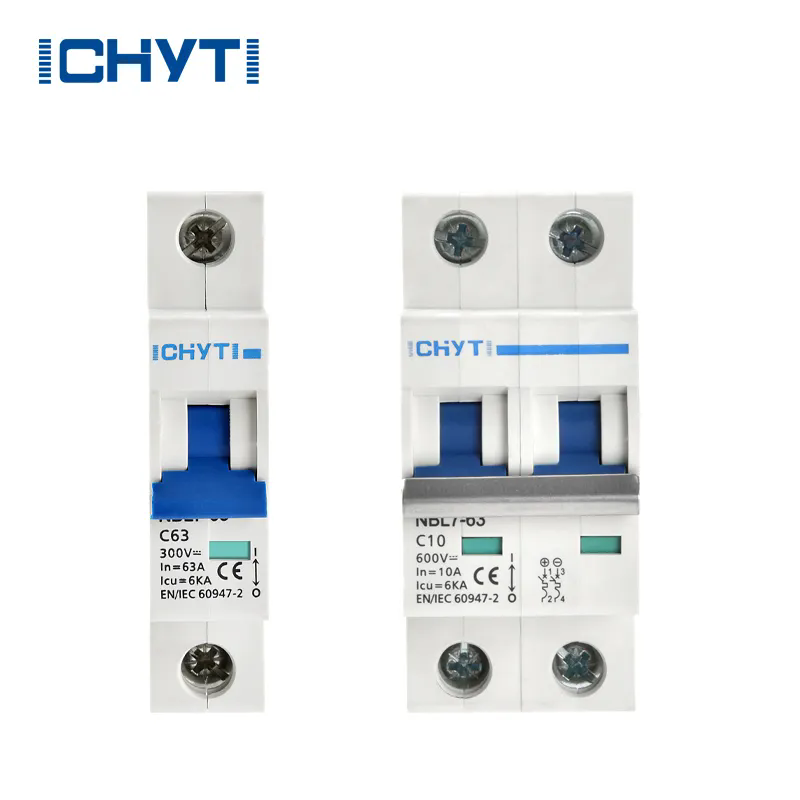Understanding DC Circuit Breaker Switches: Your Questions Answered
2024-10-30
DC circuit breaker switches are crucial components in electrical systems that operate on direct current (DC). They serve to protect electrical circuits from overloads and short circuits, ensuring safety and reliability. In this blog post, we will answer some common questions about DC circuit breaker switches to help you understand their functionality, benefits, and applications.
What Is a DC Circuit Breaker Switch?
A DC circuit breaker switch is an automatic electrical device designed to interrupt the flow of direct current in a circuit when a fault condition occurs, such as an overload or short circuit. Unlike AC circuit breakers, which handle alternating current, DC circuit breakers are specifically engineered to manage the unique characteristics of direct current, making them essential for various applications, including solar energy systems, electric vehicles, and industrial processes.
How Do DC Circuit Breaker Switches Work?
DC circuit breakers operate by detecting faults in the electrical circuit. When a fault occurs, the breaker interrupts the current flow by opening the circuit, preventing damage to the connected devices and wiring. The process typically involves the following steps:
1. Current Monitoring: The circuit breaker continuously monitors the current flowing through it.
2. Fault Detection: If the current exceeds a predetermined threshold (indicating an overload or short circuit), the breaker activates.
3. Interruption of Current: The breaker mechanism opens the circuit, stopping the flow of electricity.
4. Resetting the Breaker: Once the fault is resolved, the circuit breaker can be reset manually or automatically, restoring power to the circuit.
What Are the Benefits of Using DC Circuit Breaker Switches?
1. Protection Against Overloads: DC circuit breakers protect electrical circuits from damage due to overloads, ensuring the longevity of connected devices.
2. Safety: By automatically interrupting the current during fault conditions, these breakers enhance the safety of electrical systems, reducing the risk of fire or equipment failure.
3. Reliability: DC circuit breakers are designed to operate reliably in various conditions, making them suitable for critical applications, such as renewable energy systems and industrial machinery.
4. Versatility: They can be used in a wide range of applications, including solar power systems, battery storage systems, electric vehicles, and telecommunications.
What Types of DC Circuit Breakers Are Available?
DC circuit breakers come in various types, each designed for specific applications:
1. Miniature Circuit Breakers (MCBs): These are small, compact breakers typically used in residential and commercial applications to protect low-current circuits.
2. Molded Case Circuit Breakers (MCCBs): Designed for higher current ratings, MCCBs are used in industrial applications and provide overload and short-circuit protection.
3. Hydraulic Magnetic Circuit Breakers: These breakers use a hydraulic mechanism to trip the circuit, providing a robust solution for high-current applications.
4. Electronic Circuit Breakers: Equipped with advanced electronic sensors, these breakers offer precise fault detection and adjustable trip settings.
How Do I Choose the Right DC Circuit Breaker Switch?
When selecting a DC circuit breaker switch, consider the following factors:
1. Current Rating: Ensure the breaker can handle the maximum current of your application. It's essential to choose a breaker rated higher than the expected load to avoid nuisance tripping.
2. Voltage Rating: Match the voltage rating of the breaker with the voltage of your DC system to ensure safe operation.
3. Application Type: Choose a breaker designed for your specific application, whether residential, commercial, or industrial.
4. Trip Characteristics: Consider the trip curve of the breaker, which defines how quickly it reacts to overloads and short circuits. Different applications may require different trip characteristics.
Are There Any Challenges with DC Circuit Breaker Switches?
While DC circuit breakers offer significant benefits, there are some challenges to be aware of:
1. Higher Arc Voltage: When interrupting DC current, the voltage across the breaker contacts can remain high, which can lead to arcing. This requires specific designs and materials to ensure safe operation.
2. Size and Weight: DC circuit breakers, particularly those rated for high currents, can be larger and heavier than their AC counterparts, which may impact installation space and mounting options.
3. Cost: Quality DC circuit breakers can be more expensive than standard AC breakers, reflecting their specialized design and materials.
Conclusion
DC circuit breaker switches are vital components that ensure the safety and reliability of electrical systems operating on direct current. Understanding their functionality, benefits, and applications can help you make informed decisions when selecting circuit protection solutions. If you have more questions about DC circuit breakers or need assistance in choosing the right products for your specific applications, feel free to reach out!



